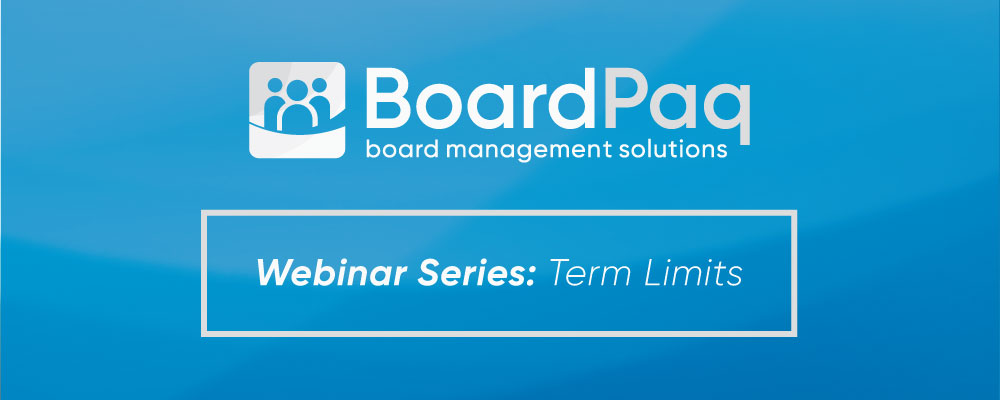Blog

Term Limits within your Board of Directors
By BoardPaq, February 24, 2018
Have you ever served
on a board of directors that never seemed to change? Whether it was the people,
the structure, the policies, etc…? This is far too common in the boardroom
world, which is why term limits were created to construct positive change
within boards and members of boards everywhere.
In this webinar you
will learn the new term limit trends that are emerging and how to implement
them within your board of directors.
The 4 Most Common
Term Limit Policies:
• A term that is unlimited
• A term that is cap based by age
(uncommon in non profits, although all states have a minimum age)
• A term that is cap based by years of
service
• A term that is based on the results of a
regular performance review (i.e. you have to produce a certain amount of work
in order to stay on the board)
For-Profit
Company Trends:
Shorter Terms
It is becoming
common to have annual elections in order to get a higher performance rate out
of members and also to eliminate the problem of having members who won't retire.
Age Caps
The age limit used
to be 72, but was extended to 75 because people are starting to live longer.
Resignation
Many boards are
starting to require resignation on change of professional status, which means,
if a board member leaves a job, accepts a new job, has a scandal, etc., then
they have to submit a resignation or might not be asked back due to violation of
a conflict of interest.
Owners Pick
Sometimes, you might
see the owners pick the directors on a board. This could be good or bad… Good
because they will pick like-minded individuals who will run the organization
similar to before, but could also be bad because they are friends and could
potentially have a conflict.
Exit Interview
When someone's term
expires, they need to have an exit interview, so the board can learn what they
liked, what they did NOT like, and what they are willing to help with in the
future.
Non-Profit
Company Trends:
Implementing
Term Limits
Over 71% of all
non-profit organizations now have term limits, which was not common before.
Consecutive
Years
It is common for a
non-profit board member to have 2 consecutive 3 year terms.
Extending
Terms
Since good non-profit
board members are sometimes hard to come by, it is common for a member's term to
be extended.
Interest Level
Keep board members who have a high interest level, performance level and are passionate about
what they do. These people are sometimes hard to find for a non-profit, so if
you have someone like this, do everything you can to keep them!
Mission
Fatigue
This is common for
non-profit organizations that deal with hard issues like violence, abuse,
trafficking, etc., because the depth of the problem becomes too overwhelming,
which can lead to burnout.
Evaluations
If you don't have
term limits, it is important to evaluate your board members each year. Some
questions you may consider asking are: Do they show up? Do they contribute? Do
they support the rest of the staff? Do they share their sphere of influence? Do
they complete committee work?
How a Board
Portal can help you manage Term Limits:
BoardPaq is a leader
in the Board Portal industry by making a difference in the way directors are managing
their boards. It not only saves your board members time and money, but it
also helps to manage term limits by tracking term length, setting date caps,
and securely storing important information like exit interviews or other
institutional memory. Making the switch from paper to digital might seem like a
hurdle, but BoardPaq is very user friendly, provides training and support, and
will ultimately save your board from headaches in the long-run.
| Tweet |